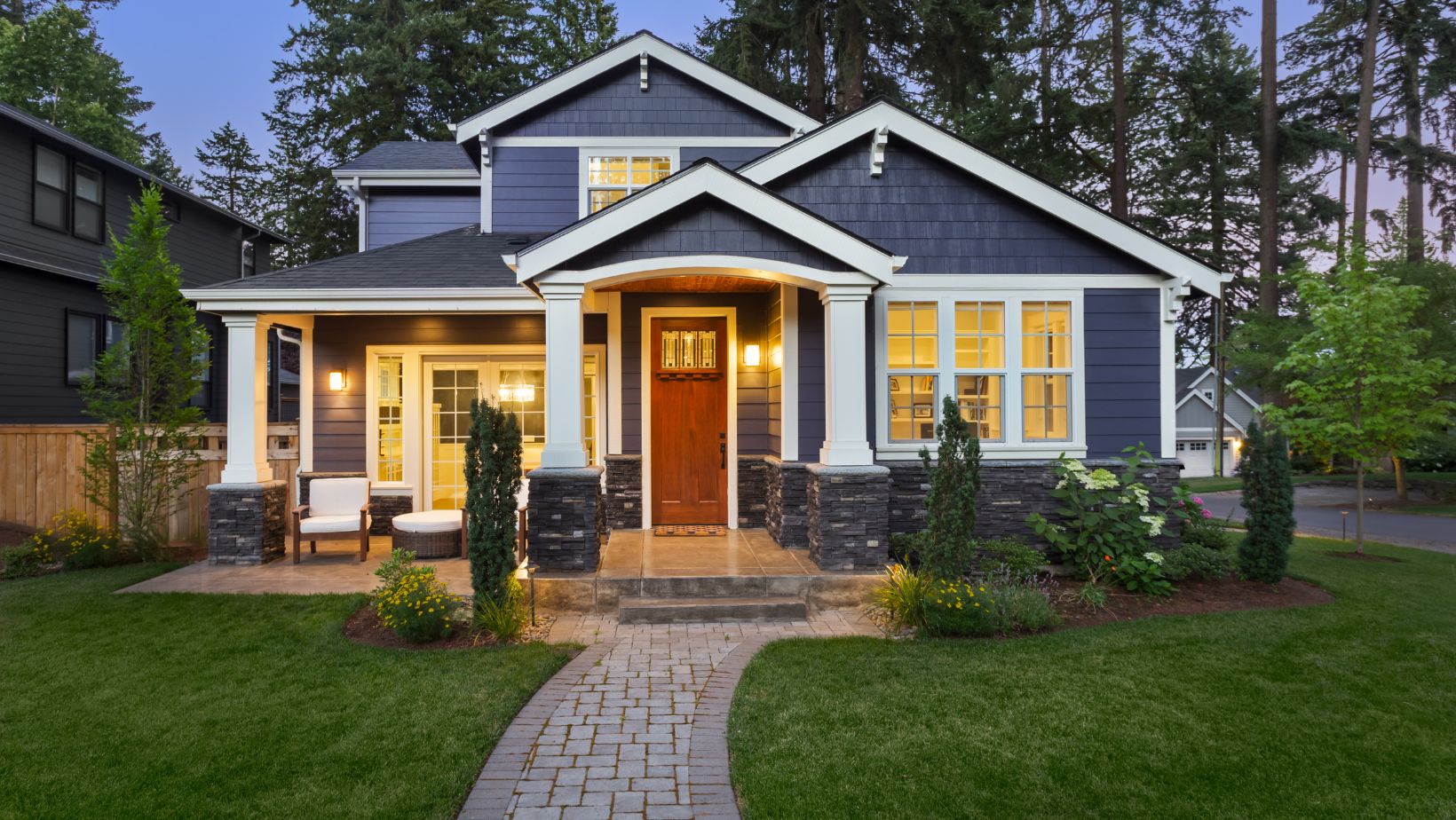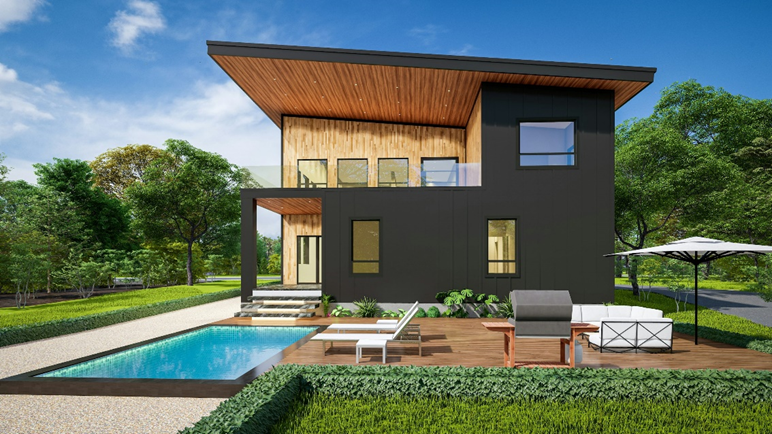In recent years, the focus of home design has shifted. Many people are opting for smarter, more sustainable homes that prioritize functionality over size. The concept of living “smarter, not larger” is gaining traction as individuals seek to create spaces that are both efficient and practical. As urban living grows more common and space becomes increasingly limited, efficient home design trends offer a way to optimize both small and large spaces.
This shift in thinking is influenced by a growing awareness of environmental concerns, financial considerations, and the desire for simpler, more manageable living spaces. Homeowners are beginning to realize that less can be more and that creating a space with more thoughtful design can enhance the quality of life while reducing unnecessary waste.
Roofs as the Foundation for Smart Living
A key component of efficient home design is ensuring that every element of the house contributes to its overall functionality and sustainability. When designing a home with smart living in mind, it’s crucial to start from the top. The roof plays an important role in both insulation and energy efficiency, making it a vital part of an eco-friendly and well-designed home. The materials chosen for roofing, the quality of the installation, and the system in place all influence a home’s energy performance.
For example, homeowners can consider installing new roofing systems that incorporate energy-efficient materials to reflect more sunlight and absorb less heat. This reduces the heat island effect and helps maintain cooler indoor temperatures. Additionally, modern roofing materials can be designed to withstand extreme weather conditions, offering durability and protection. Choosing the right roof can make a significant impact on lowering energy costs and increasing comfort inside the home.
With the right roofing system in place, homeowners can ensure their house stays cooler in summer and warmer in winter, all while contributing to overall energy savings and reducing the environmental footprint of their living space.
Smart Home Technologies and Automation
Smart home technology is no longer a futuristic concept; it’s a reality that is transforming how we live in our homes. From automated lighting systems to smart thermostats, these innovations allow homeowners to control various aspects of their homes remotely, saving both time and energy.
For instance, smart thermostats can adjust heating and cooling systems based on real-time data, optimizing energy usage. This reduces unnecessary energy consumption, making homes more eco-friendly. Smart lighting systems, such as LED bulbs paired with motion sensors, ensure that lights are only on when needed, further contributing to energy savings.
Moreover, the integration of smart appliances, such as refrigerators, washing machines, and ovens, helps streamline everyday tasks. These appliances are designed to operate more efficiently, with sensors that monitor usage patterns and adjust settings for optimal performance.
The key to making the most of these technologies lies in ensuring that they work harmoniously. A well-designed home integrates these devices seamlessly into the living space, ensuring that they enhance comfort without cluttering the environment with unnecessary gadgets.
Space Optimization Through Multi-Functional Furniture
In a world where space is at a premium, maximizing the potential of every square foot has become a top priority. Multi-functional furniture is one of the most popular trends in efficient home design, particularly for smaller homes or apartments. These pieces of furniture are designed to serve more than one purpose, enabling homeowners to make the most of limited space.

For example, a sofa bed or a fold-out desk can instantly transform a living room or office into a guest bedroom or workspace. Modular furniture allows for customization, so homeowners can adapt their space to fit changing needs. These pieces not only save space but also contribute to a clutter-free environment, which is essential in a smart home design.
This functional design philosophy extends to the heart of the home, where the configuration of tables and seating needs to be both aesthetic and efficient. Choosing a complete dining set that features chairs that tuck neatly beneath the table or includes a bench for flexible seating arrangements is a practical example of selecting coordinated pieces that maximize both seating capacity and floor space in a kitchen or dining area.
Incorporating hidden storage into furniture designs is another way to optimize space. Furniture pieces such as ottomans, coffee tables, and beds with built-in storage provide a convenient way to store items that would otherwise clutter the home.
Sustainable Materials and Eco-Friendly Design
Sustainability is at the heart of efficient home design. As more people become environmentally conscious, the demand for eco-friendly materials has risen. Homeowners are increasingly choosing sustainable options for everything from flooring and cabinetry to countertops and wall finishes.
For example, bamboo is becoming a popular choice for flooring due to its durability and rapid regrowth, making it a renewable resource. Recycled and reclaimed materials, such as wood and metal, can also be used to create unique and environmentally friendly designs. To spruce up your living room design while adding both elegance and durability, a teak wood sofa set can serve as a stylish focal point. This choice not only enhances comfort but also blends seamlessly with eco-friendly interior themes.
In addition to using sustainable materials, homeowners are opting for low-VOC paints and finishes, which reduce the presence of harmful chemicals in the air. These choices not only make homes healthier but also contribute to a cleaner environment.
Flexible and Adaptable Spaces
Efficient home design is not just about optimizing existing space; it’s also about creating spaces that are flexible and adaptable to changing needs. In the past, rooms in a home were designed for specific purposes, such as a living room, a dining room, or a bedroom. However, the modern home is more fluid, with spaces that can easily be repurposed as needed.

For instance, a spare bedroom can double as a home office, a guest room, or a yoga studio. Sliding doors, partitions, and movable walls allow homeowners to change the layout of a room to suit their needs, making the space more versatile. This adaptability is particularly important for people living in smaller homes or apartments, where every inch of space counts.
The key to creating a flexible home is to incorporate multi-functional design elements that can be easily adjusted or reconfigured. The goal is to create a living space that can evolve as lifestyles and needs change, offering long-term value and functionality.
Living smarter, not larger, is a philosophy that encourages homeowners to embrace efficiency, sustainability, and functionality in their home design. By incorporating smart technologies, multi-functional furniture, sustainable materials, and flexible spaces, it’s possible to create a home that is both practical and stylish without the need for excessive space.
This approach to home design doesn’t just benefit homeowners financially and environmentally; it also contributes to a simpler, more intentional way of living.
Top of Form
Bottom of Form
